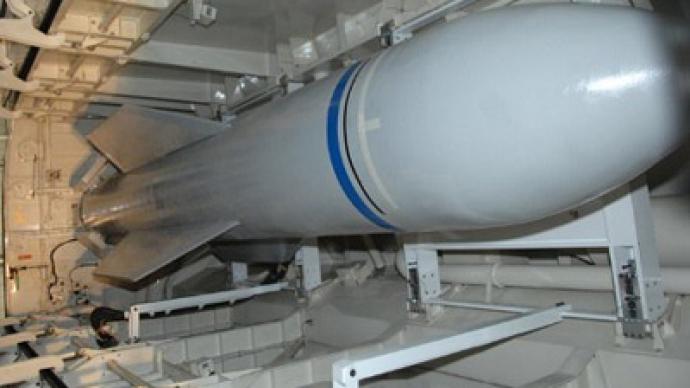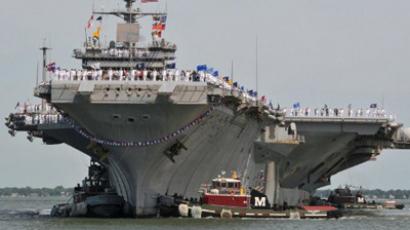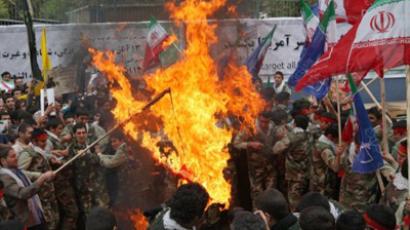US toothless against Iran rock: Pentagon seeks new superbomb

Having considered the toughness of the rock-hidden Iranian nuclear facilities, America’s Nutcracker military command has decided to save jaw and develop a new conventional superbomb, since the US still plans to do the job in Iran without nukes.
Washington has once again reminded Tehran that it has the military capability to crack Iranian hard-target nuclear sites with conventional weapons, leaking to the Wall Street Journal plans to develop an even more effective bunker-buster bomb.The American military is no longer in love with the most powerful non-nuclear weapon it possesses, the Massive Ordnance Penetrator (MOP), a 13,600-kilogram mammoth capable of penetrating deep underground facilities.The Pentagon paid around $330 million to Boeing to develop and produce 20 MOP bombs, specially developed to destroy bunkers in countries like Iran and North Korea.Now, the Defense Department intends to spend another $82 million, to make those bombs even more effective.An MOP is capable of penetrating 60 meters of reinforced concrete or 38 meters of hard rock, delivering 2,700 kg of explosives deep down, to reliably demolish anything manmade. Yet, in the case of Iran’s Persian mountains, even this doesn’t seem enough.In hiding its nuclear work, Tehran clearly considered the experience of Saddam Hussein and Bashar Assad, who lost their research nuclear reactors in 1981 and 2007 respectively.Iranians really had to turn into fairytale dwarves, digging deep into the mountains but with a very un-fairytale intention: not to find something precious, but to safely hide their nuclear program.In our times, when bombing a sovereign state into Stone Age is an easy walk, as we see from Libya’s example, such a precautionary measure does not appear superfluous.But this is exactly what makes American generals nervous – they need 100% guarantees that the targets they cannot destroy do not exist, particularly in Iran.For example, military experts are not sure an MOP can get to Iran's Fordo enrichment plant facility that has 60 meters of hard rock mountain above it.At the moment, only a tactical nuclear weapon of several dozen kilotons could guarantee the site’s elimination."Once things go into the mountain, then really you have to have something that takes the mountain off," an unnamed US military official is reported to have said.But no, using nukes would set a precedent for all the other proud owners of atomic arms worldwide. Countries like China, North Korea and – God forbid – Russia would get a free hand to blindside America with nukes at the breath of suspicion.The last time the US used nuclear weapons against a civilian population was in Japan in 1945, and that fact is still well-remembered, and not just in Japan.That is why today, the American military lays its hopes on conventional explosives with expanded capabilities, putting tactical nukes by for a rainy day.And just in case you were wondering, none of the abovementioned has anything to do with Israel. Though Tel-Aviv has never tried out its almost proven nuclear arsenal on anybody, they rather like saber-rattling, saying they would protect the Jewish state at any cost – and preemptively.Their fingers are apparently itching on the trigger switch, in forgetfulness that the country starting a war is not necessarily the one that finishes it.














